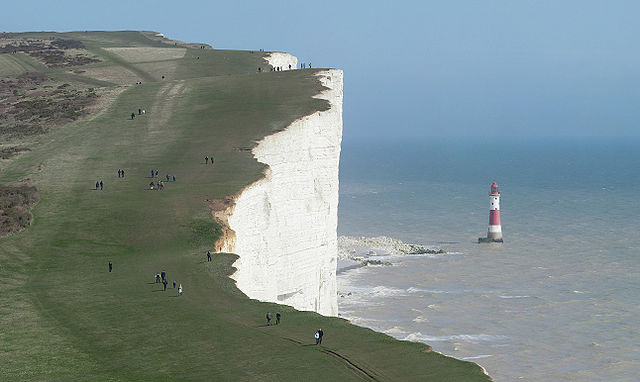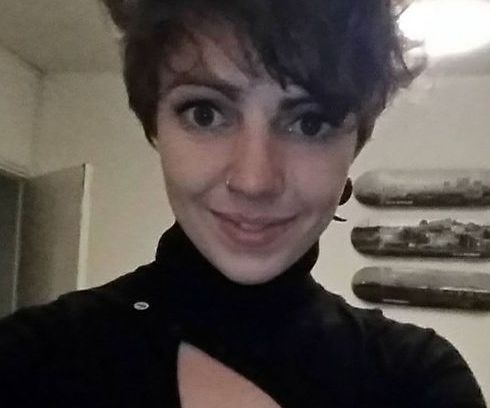We will be adding new stories over the course of several months. Stay tuned.

Bear with me as I address a highly controversial topic in the ayahuasca world: ayahuasca deaths.
One of the most common questions we receive about ayahuasca is, “Can you die from ayahuasca” and, as mentioned in our FAQs page, the short answer is YES.
However, the probability of dying from drinking ayahuasca is practically null, especially if you ensure you are drinking this healing medicine with experienced professionals that have given you the green light to drink ayahuasca and closely supervise the process.
You are more likely to die due to medical malpractice at your local hospital than from drinking ayahuasca. In fact, you can expect to live quite a bit more after ayahuasca. Most people that have benefited from ayahuasca will tell you the same.
People tend to focus on the scary and negative side of pretty much anything, especially if it is associated with “drugs”, as is the case of ayahuasca. The hundreds of thousands of individuals that have, instead, healed and benefited from ayahuasca are conveniently overlooked.
There’s no point in denying that there have been unfortunate accidents and even deaths relating to ayahuasca – but that is definitely the exception, not the norm. And, as you’ll see in some of the highlighted ayahuasca death stories in this article, sometimes it’s another substance or situation that led to the fatality.
After nearly a decade organizing plant medicine retreats and ayahuasca ceremonies in Ecuador, we have never dealt with a situation that required medical intervention, let alone a situation that led to someone’s passing. Again, this very rarely happens.
Since there is already so much pushback against people that serve ayahuasca, healers around the world (especially those that are a little less traditional) take extra care to filter out potential risks, either due to medical conditions, medication, mental state or otherwise.
Table of Contents
Ayahuasca death stories: about this compilation
I have compiled the following stories related to ayahuasca deaths so that people can find them all (or most of them), in one place and more easily compare stories, though each one is unique.
Each story includes a summary as well as an analysis in order to conclude whether ayahuasca was what led to their death.
These are not just stories. These were lives. And we hope that by sharing these, people can be better informed about ayahuasca, plant medicine and the tourism industry that has been built around these.
We mean no disrespect to the victims and their family members in sharing these stories and photos. Rather, we honor their lives and hope that they are resting in peace.
The following stories are organized from newest to oldest. This is probably not a comprehensive list, but the stories that have been most prominent in the news over the last 10 years. Note that we will be adding new stories over time.
Jennifer Spencer, 29, commits suicide in the UK.
Her death is associated with the practice of Kundalini and ayahuasca (from Peru and possibly in the UK)
Date: November 2019
What happened?
Tragically, while walking with her father at Beachy Head, East Sussex, Jennifer jumped off the edge of the cliff, ending her life. This was her second suicide attempt (that we know of).


According to the assistant coroner, Jennifer’s mental health deteriorated after ingesting hallucinogenic drugs (7 months prior to suicide) and practicing Kundalini yoga. Her family claims she had no mental health problems before going to Peru to drink ayahuasca and before practicing Kundalini. However, her boyfriend states that she had mental health issues prior to traveling to Peru.
Jennifer went to Peru in April 2019 with her boyfriend who had been learning/practicing shamanic traditions. There, she practiced Kundalini (a practice that awakens awareness through deep breathing, movements and mantras) and drank ayahuasca.
Her boyfriend claims he did not want her to drink ayahuasca because she already had some mental health issues, but she insisted and was given a small amount. She was fine during the ceremony and her behavior was normal afterwards.
She and her boyfriend split up in July 2019, apparently after returning to the UK (it’s unclear how long they traveled in South America).
About 1 month after returning to the UK, things started to unravel. Jennifer was fired, she wasn’t sleeping or eating and her mental health deteriorated.
She started claiming she had increased perception and the ability to read people’s minds. She was becoming paranoid and scared and believed her brain had split in two. She committed suicide in November 2019 (unlcear how long she was struggling with psychosis).
Our analysis
Jennifer’s suicide has been directly attributed to the consumption of ayahuasca when, in fact, there are many more components to the story, such as:
- She likely had mental health issues prior to drinking ayahuasca
- She insisted on drinking ayahuasca against the advice of her boyfriend who had more experience in this realm. After drinking the first time, she was fine.
- She took mugwort, another hallucinogenic plant (when back in the UK) – there is no additional information about this, who did she take it with, how did her behavior change?
- She may have consumed more ayahuasca back in the UK – same questions as with mugwort
- She began practicing Kundalini around the same time, which can have powerful effects. Associated with yoga, people often underestimate the power of Kundalini.
- She went through a break up in the months prior to her death
Other questions that come to mind are: when Jennifer began exhibiting psychosis, and especially after the suicide attempt, did her family try to get her help? In what way? Were they well informed about mental health issues? Is there a history of mental health issues in her family that she may, or may not, have been aware of?
While the family is definitely not to blame, it is unfortunately quite common that close friends and family are unaware of pervasive mental health issues that their loved ones might be dealing with.
Those that wrote these news stories (see sources) clearly took the easy route, simply blaming a “drug” (ayahuasca) they know very little about.
Stating Jennifer killed herself after drinking ayahuasca is an oversimplification, indicating that these sources are not credible. The headlines are also clearly clickbait, “Woman, 29, took her own life after ‘suffering psychosis from hallucinogenic yoga drugs’”
There is no such thing as a hallucinogenic yoga drug.
From our perspective, this is a story about a young woman that was struggling with mental health, seeking assistance, and unable to find it, leading to her tragic suicide.
If Jennifer was, in fact, struggling with mental health issues before drinking ayahuasca, as her boyfriend states, she should not have been served ayahuasca. A proper intake interview by the shaman or retreat center should have concluded this, though it is likely they went to a shaman that doesn’t require this.
After drinking ayahuasca, she should have received integration assistance. Before ayahuasca, if she was already struggling with mental health, she should have received other types of psychotherapy.
Conclusion
Ayahuasca did not cause Jennifer’s death; the consumption of ayahuasca should not be blamed for everything that was troubling Jennifer and led to her suicide.
Unfortunately, mental health issues are widespread and may be triggered by any type of situation or substance.
Jennifer should not have had access to the powerful and healing substances like ayahuasca and mugwort without proper assessment, supervision and guidance (before and after her experiences). But demonizing these plants is misleading and potentially harmful.
Read more in this Reddit thread about this ayahuasca death.
Canadian Sebastian Woodroffe, 41, killed Shipibo medicine woman and was subsequently lynched by indigenous community
Date: MAY 3, 2018
Sources (many is Spanish): El Pais, Reuters, CBC, CBC, CBC, CBC, Servindi, Servindi, Servindi, Metro UK (bad article), ONAMIAP, TV Peru Noticias, Indiegogo, Temple of the Way of Light
What happened?
Here is another headline article about a supposed “ayahuasca-related” death.
It’s impossible to not express bias when writing this due to the fact that an 81-year-old (some reports say she was 84) Shipibo ayahuasca healer – an invaluable fount of wisdom and tradition – was murdered and somehow ayahuasca is to blame. The story is much more complicated and actually remains a mystery.
Sebastian Woodroffe first traveled to Peru in 2016 to learn about ayahuasca, natural healing, and plant medicine because he wanted to become an addictions counselor, as indicated on his Indigogo crowdfunding campaign.
Based on his own words in the campaign story, he had already gone once for 3 months and was planning to go back for another 3 months as an apprentice.
He also wrote:
“I cannot stress how important it can be to retain old knowledge such as the knowledge these people have harboured in there cultural memory. It is a far more valuable resource than all the trees, minerals, and oil in the whole Amazon. Cultural knowledge cannot be restored once it is wiped out. It is something that takes tens of thousands of years to nurture. I feel responsible trying to support this culture and retain some of their treasure in me and my family, and share it with those that wish to learn. To expand on that idea, I feel this is my path of being a responsible, accountable human being.”
According to his friend, Sebastian was an attentive father and was “a little bit of a shit disturber… One of these people who likes to poke, and likes to test the boundaries of people’s beliefs, but is very much a gentle person underneath all that. This man has never had a gun or talked about anything along that line.”
Olivia Arevalo was an elder, a healer and a leader among the Shipibo-Conibo of Peru. She served ayahuasca and worked with many other plants, teaching about and treating people with them. She is also known for her beautiful icaros.
Our analysis
The popularized version of the story is that Sebastian filmed Olivia Arevalo singing the above icaro and subsequently shot her 3 times, leaving the scene of the crime. It is unclear whether there were witnesses, but apparently 5 shots were fired, 2 in the air and 3 at the victim.
This was on a Thursday.
Sebastian was the prime suspect, probably because he had been seen with her last, and a manhunt began. When community members found him, they took justice into their own hands and lynched him, dragging him through the mud and strangling him until he died. He was buried and found on Saturday.
Bullet cartridges found near Olivia Arevalo matched a gun Sebastian had bought in April (the month before) and there was gunpowder on his clothes.
Upon further investigation, however, other hypotheses emerge.
Hypothesis 1
Olivia Arevalo was killed for political reasons and Sebastian was the scapegoat. According to various sources, including this one, “Arevalo’s slaying prompted outrage as it followed the unsolved killings of other indigenous people in the Amazon region who had faced threats for trying to protect their land.”
Olivia Arevalo was killed in May 2018 following the murders of a few other indigenous leaders. Less than a year prior to Olivia’s murder, another shaman, Teodoro Gómez Sánchez, had also been murdered. How these murders are related is not clear, apart from the fact that they are both medicine people.
A related theory by one of Sebatian’s friends that apparently looked into the murder is that
“Arevalo was attracting tourist dollars and could have been a target of many political forces. She advocated for the environment and had recently opened up a lucrative healing centre offering ayahuasca experiences to so-called “gringos.”
Willard fears that his friend, who could be “disruptive” may have become a scapegoat in the complex political environment around this kind of tourism.”
In this interview, Olivia’s family members say that she had already received written threats, sometimes in an envelope with empty bullet cartridges.
And, in an official statement by the National Coordination of Human Rights (CNDDHH), the following is stated,
From the CNDDHH we call attention to the growing spiral of violence and insecurity affecting the Ucayali region, which impacts in particular on the indigenous-Amazonian peoples constantly threatened by forces operating behind corruption and organized crime in the area. This crime occurs in a context where human rights defenders in Peru face increasing risks to their safety and lives, in the absence and/or unwillingness of the Peruvian State to generate the necessary conditions to guarantee the development of defenders.
Hypothesis 2
Sebastian was owed money by Olivia’s son and killed her as revenge.
Some statements indicate that Sebastian had lent Olivia’s son a large sum of money, which led to the conflict.
“Police and residents cited in Peruvian news reports have said tensions had risen in previous months between the Vancouver Island man and Arevalo’s son, because the Peruvian allegedly owed Woodroffe about $5,000.” Source.
Hypothesis 3
Olivia Arevalo would no longer work with Sebastian, he got angry and murdered her.
“Woodroffe had been Arevalo’s patient, and her family believes he killed her because she refused to conduct a ritual in which the hallucinogenic Amazonian plant brew ayahuasca is used for healing and spiritual growth.” Source.
This theory has many holes. Why did she no longer want to treat him if she was known for sharing her medicine with everyone?
Maybe it was related to business because, in one testimony, Olivia found out Sebastian was making money by sending people to her and she refused to continue working with him.
Too many unknowns
Generally speaking, there are many gaps in this case. In various sources, tests were supposedly done to determine whether Sebastian in fact fired the gun and whether he was under the influence of something (alcohol, ayahuasca?) when he committed the murder.
Nothing more is reported regarding these tests. Were they actually carried out? If not, why not?
Why did Sebastian buy a gun to begin with, did he feel threatened? Was/is violence and corruption in the area that extreme already? If so, the possibility of the scapegoat theory might carry more weight than we think.
In one article, the following is stated:
Friends say Woodroffe, who first travelled to Peru in 2016 to find natural healing and plant medicines, had become more distant after trying ayahuasca.
“He had a beautiful spark to him that people respected and loved,” Willard said.
But Willard said he’d come back from experiences in South America “not broken, but troubled.”
What was troubling him? Was it the corruption in the area? The fact that the ayahuasca tourism industry is just as corrupt as any other industry, even though the purpose is to heal? Was it his mental state after drinking ayahuasca?
Why would Sebastian record an icaro and then shoot Olivia Arevalo? If they were on bad terms, why would she let him film the video?
The truth may never emerge, but based on all the information collected to write this story, some version of the scapegoat theory (#1) makes the most sense.
Here is a Peruvian news video in Spanish that summarizes the incidents of this case:
Conclusion
Ayahuasca is not to blame for these deaths. Greed, corruption, and violence are to blame.
If tests indicated that Sebastian was somehow “under the influence” of ayahuasca when the murder was committed, that would raise more questions about ayahuasca, but nothing indicates that this is the case.
If the argument is that Sebastian became troubled because of drinking ayahuasca which might have led him to commit this crime, well…that argument is also weak because he might have become troubled for many other reasons. Corruption, disappointment, personal relationships, health issues…the list is endless.
![Read more about the article Choosing a safe ayahuasca retreat [Updated 2024]](https://almahealingcenter.com/wp-content/uploads/2022/04/Choosing-a-safe-ayahuasca-retreat-300x118.png)

